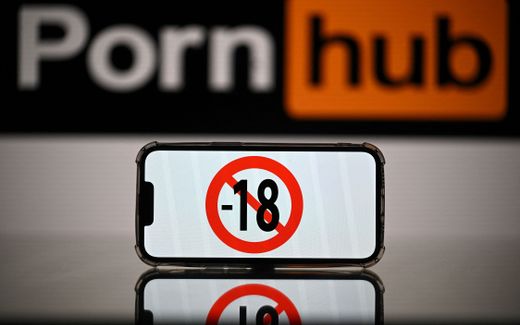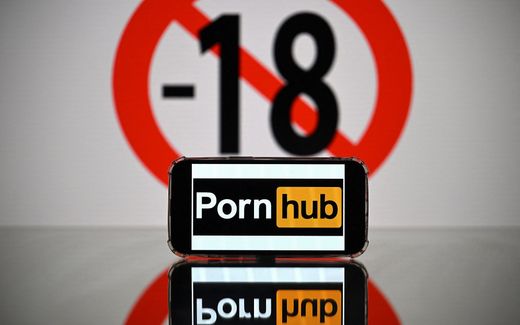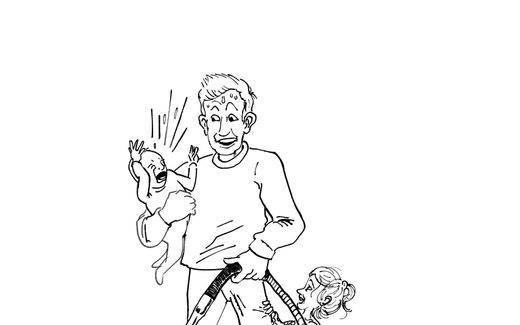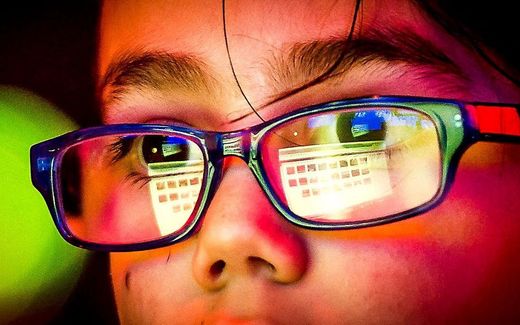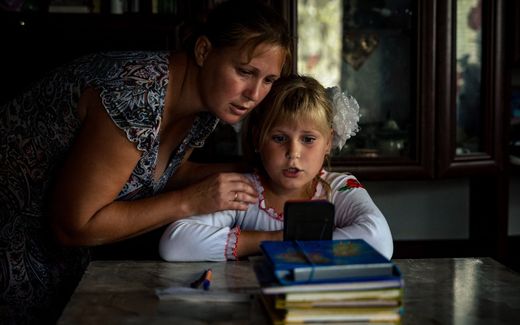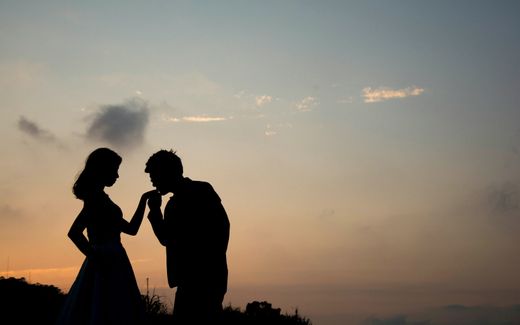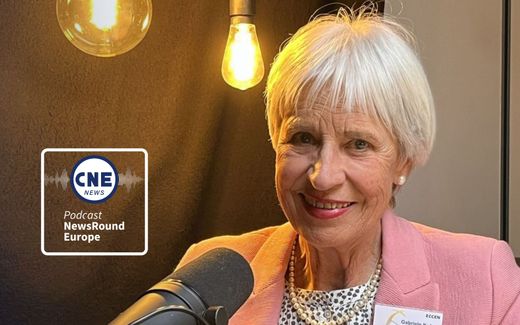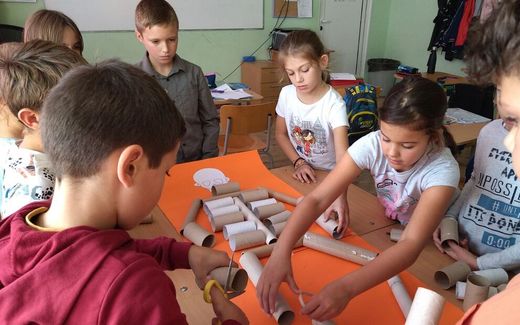Porn clicks good – but don't speak about the rest
21-08-2025
Central Europe
Johannes Blöcher-Weil, PRO

Photo ANP, Roos Koole
Central Europe
Schools and parents are alarmed: Pornography is available always and everywhere. No fewer than 1.3 billion websites worldwide attract visitors with this content. But who speaks about the consequences?
Sebastian Buss still remembers exactly what his life was like when he watched porn for the first time: “I was twelve years old and didn’t have a stable personality.” On top of that, his parents were getting divorced, and his mother was raising four children alone. Curiosity turned into addiction. It took him years to overcome it. Buss actually longed for stable, personal relationships.
But porn isolated him more and more: on the one hand, because he spent more time watching porn than pursuing hobbies, and on the other, because he felt alone with his problem. “I suffered enormously”, he says.
He wanted to stop, but he couldn’t. Because there were no YouTube videos or tutorials at the time to explain how he could quit, he struggled with and against his addiction for a long time. Eventually, he confided in a friend and realised he wasn’t alone.
Brain
Three per cent of all adult men in Germany are affected by pornography use disorder, according to Rudolf Stark. That is approximately 750,000 people. Stark is a professor of psychotherapy and systems neuroscience at Justus Liebig University in Giessen. The number of women is significantly lower, but there are hardly any reliable studies on this.
For fifteen years, he has been researching how the brain reacts to pornography: “Consumption activates areas that we know from other studies on addiction research.”
When someone comes home from work and always watches pornography, this creates a routine in the brain, and the behaviour becomes second nature, he explains. The body releases dopamine and sends a signal that something important is happening. The more often this is repeated, the harder it is to suppress the impulse.
In their current project, ‘PornLoS’ Stark and his team of scientists in Giessen want to investigate how useful psychotherapeutic approaches are and how treatments can be networked and optimised.
The project is being funded with five million euros from the Joint Federal Committee. This federal committee decides which services are covered by health insurance and later become routine therapies. Results are expected to be available at the end of 2026.
Relationships
Sebastian Buss quit his porn use at the age of 19. Clear daily structures, a healthy diet, and stable relationships helped him achieve this. But the topic still accompanies him today.
The Christian works as a ‘porn coach’ for men. Buss says that according to recent studies, one in five men between the ages of 31 and 40 watch porn every day, and 53 per cent do so weekly. Smartphones have increased consumption and made it easier, even at work.
“Many seek a thrill in illegal videos at some point.”
For many of these men, it is not about unsatisfied sexual needs. For half of them, it is other neglected basic needs such as food, drink and sport that lead them to consume pornography. Another 40 per cent watch porn because they have unresolved emotional conflicts: “Many seek a thrill in illegal videos at some point”, says Buss. This can involve violence and fetishes, and in the worst –and most criminal– cases, sex with children.
Buss wants to break this negative spiral and help the men regain self-respect. The theologian reflects with his clients on their inner conflicts and considers where and why they are triggered by pornography. They come from all social backgrounds and age groups.
Buss and Stark observe similar things that cause suffering among those affected. “Many put their relationships at risk through their consumption. It would be nice if they could experience fulfilling sexuality”, says Buss.
“Pornography is one face of prostitution.”
In the long term, society also suffers. There is already a shortage of therapists. In addition, human trafficking and prostitution have too strong a lobby. “Pornography is one face of prostitution”, says the website of the educational organisation ‘Safersurfing’. People are exploited in the production of pornographic material.
Fantasies
Many of Stark’s study participants also want a life without pornography: “They suffer from consumption and notice how sexual fantasies dominate their lives.” This is also confirmed by Gabriel Kießling from the White Cross. This organisation provides professional counselling to those affected throughout Germany. “In the past, pornography was hidden behind the curtain of a video store”, says Kießling.
Digital media have ensured that the material is anonymous, free, available anytime, anywhere and immediately: “Those affected tell me things like, “Nothing in my life kicks as hard as porn!”” Many also suffer from low self-esteem: “They don’t want to consume it, but they do anyway. They are constantly confronted with their inner weakness.”
People with Christian beliefs, in particular, find this dissonance difficult to bear. “They experience a crisis of faith because they don’t know whether God still takes their repentance seriously.” To help them, the White Cross and ERF Medien have developed the online course ‘Raus aus der Porno-Falle’ (Out of the Porn Trap): “One key is to find out: What do you gain by no longer consuming it and how can you meet your individual needs in a meaningful way?” explains Kießling.
Healthy image of sexuality
Sebastian Buss is also active in this area and, in 2012, co-founded the association PAID e.V. (PornoAufklärungsInitiativeDeutschland, which means “Porn Education Initiative Germany”). Its employees visit schools up to twice a month to talk about pornography. They try to educate young people about the negative consequences of pornography and convey a healthy image of sexuality. The earlier this happens, the better, says Buss.
A twelve-year-old boy wanted to reenact a rape scene from a porn film with his eight-year-old sister.
On average, children see their first porn at the age of eleven and have sex for the first time at 17. The time in between is formative for how they deal with sexuality. For many students, visiting the experts is often the only opportunity to talk openly about the topic and ask questions.
He needs strong nerves to hear the stories the young people tell him. A twelve-year-old boy wanted to reenact a rape scene from a porn film with his eight-year-old sister. A mother saw her eleven-year-old son watching porn. The son confessed to her that his classmates had threatened to beat him up if he didn’t look at the sites. “Much of this is also judicially relevant, but it is trivialised”, emphasises Buss.
And, of course, social media influences how people interact. Teenagers are bombarded with sexual content on Instagram. Buss tells of girls who eagerly await their 18th birthday so they can produce and distribute their own content. The fact that 80 per cent of all eighth graders have their own WhatsApp channels through which they send each other pornographic content also makes the work more difficult.
Gift
Buss and Kießling also emphasise the responsibility of Christian communities in this area. They report similar user numbers to those in the secular sector: “Communities need to talk about this issue, and they should do so positively”, Buss hopes. After all, sexuality is not just about satisfying a desire, but is also a gift from God: “I open myself up emotionally and spiritually to my partner.”
Kießling wants churches to take a realistic view of the issue and be able to talk about it: “Many leaders believe that the issue does not exist in their churches. Others panic at the thought that young people are watching pornography en masse.” Christians should be trained to work towards a culture that is tolerant of mistakes and offers help: “If the impression is given that everything is sacred and perfect, this increases the pressure to keep up.”
Mum and dad, regardless of their age, are the best people to talk to about this, as long as they do not cause panic or shame.
Questions
Parents also have a special responsibility. Only a fraction of children ask questions about the subject on their own: “We should talk to children about it in an age-appropriate way and explain to them that pornography exists, what it is, and how to deal with content that frightens or excites them.” Mum and dad, regardless of their age, are the best people to talk to about this, as long as they do not cause panic or shame.
The new health insurance catalogue offers a small ray of hope for Buss, Kießling and Stark. It now lists pornography use disorder as a diagnosis. This applies when pornography takes up more and more space in a person’s personal life, and they have experienced a loss of control for six months. For Kießling, this is only the beginning. The topic belongs in every school curriculum and the training of theologians and parish workers.
For Sebastian Buss, quitting was a huge relief. Porn had given him a false image of sexuality that did not correspond to reality. He made his distress public. Now he can give hope to other men, because most of them feel empty after consuming porn.
Compulsive Sexual Behaviour Disorder
The World Health Organisation acknowledges Compulsive Sexual Behaviour Disorder, which includes problematic use of pornography. It is therefore considered an impulse control disorder. At least one of the following criteria must be met for a diagnosis to be made:
- Sexual activities become the focus of life and other activities are neglected
- Multiple unsuccessful attempts to control the problematic behaviour
- Continuation of the problematic behaviour despite negative consequences in relationships and at work
- Continuation of the problematic behaviour even though it provides little or no satisfaction
This article was translated by CNE.news and published by PRO on July 10, 2025
Related Articles

